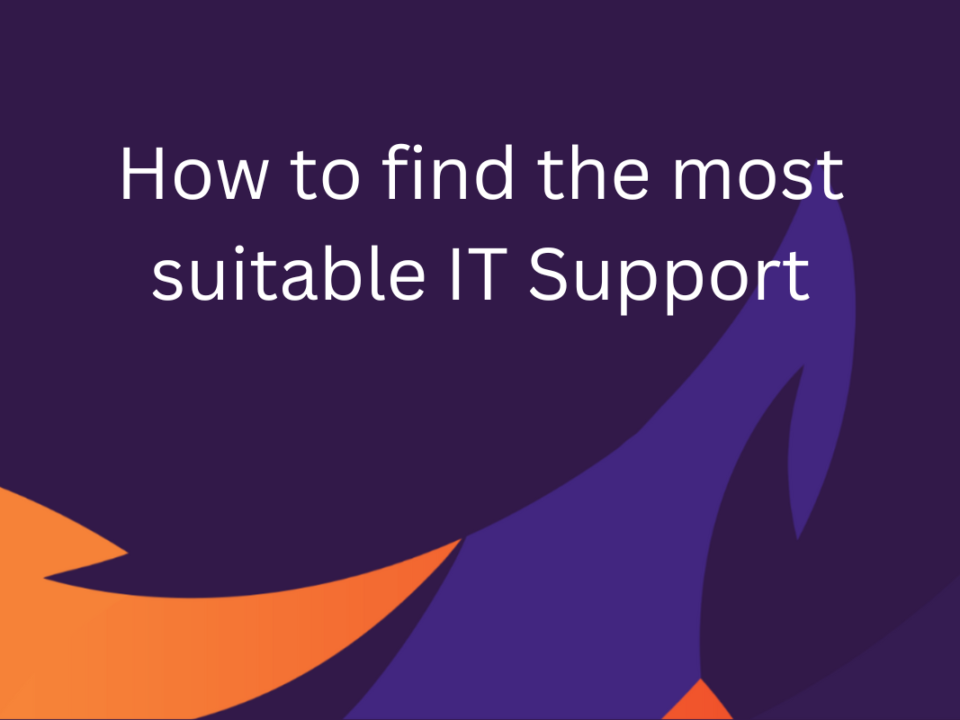How to brief an IT consultant to get the best tech support
Authentically digitalised workplaces are now more vital than ever. They are needed to support an increasingly dispersed workforce and a growing number of automated business processes.
That, in turn, makes protecting the health of your IT absolutely crucial to keep your business productive, compliant and secure. It is therefore vital to take steps to stay on top of cybersecurity threats and ensure business continuity with strong disaster recovery plans.
This is leading to a diverse range of organisations finding ways to outsource IT support. For many, it’s the only way to ensure they are channelling sufficient focus and expertise into optimising their digital workplace.
Finding the right source of help starts with putting together a brief for IT consultancy services.
This article explains the benefits of taking plenty of time over this. It also outlines the sort of information to include when you seek an IT support proposal. The ultimate purpose of this article is to help you find the best IT consultant at the best price!
Why IT consultant briefs must be thorough
Putting together a solid and insightful briefing document for any kind of outsourced service is the only way to get the working relationship off to a fruitful start.
It sets in place clear business goals – like a road map the potential consultant and client can both follow. Progress can be measured accurately, and you can ensure you are getting value for money as well as meeting key milestones.
Of course, a comprehensive briefing document can also help you to compare like-with-like when it comes to quotes for IT services too.
If you’ve provided a comprehensive overview of exactly what your needs are now, and what they are likely to be in the future, the provider can structure their proposals and pricing against your ‘shopping list’. This ensures you can truly evaluate the best value propositions.
To make that clear, cheapest is not always best when finding an IT consultant! You need assurances that the costs are tied to providing everything you need, at a level that is the best fit for your organisation’s challenges and opportunities.
Goal setting starts with an IT health evaluation
Preparing a detailed brief for outsourcing IT support is also a great opportunity for your organisation to do essential ‘dipstick’ research. Often, information technology evolves fast in companies and both software and devices get updated, amended or disused on a regular basis.
This can leave you with a fragmented IT provision in your organisation. Mapping out where you are now, and where you want to get to, ensures you only invest in what is necessary and cohesive.
To effectively structure your outsourcing proposal, you could split your requirements into immediate, medium-term and long-term outcomes.
For instance, do you urgently need updated IT security training? Do you then need help with cloud migration to continue to create your digital workplace? With all this done, you may have ticked all the right boxes.
However, consider whether a long-term relationship with an IT consultant will bring important advantages and potential cost savings.
When you get the right outsourcing provider involved – to provide immediate IT fixes and improvements – they should invest their own time in understanding your business environment and aims. You could then put that to good use, by making them a permanent part of your team!
Their existing knowledge of your organisation and its IT network could be a great platform on which to provide ongoing support, including an IT helpdesk and remote monitoring & maintenance.
What else should go in IT support proposals?
If you were to search for ‘IT consultancy services in Cheshire and Manchester’ you may come across a few names you are familiar with. That’s not the same as knowing their calibre and abilities to respond to your specific business needs.
The same thing applies in the opposite direction. You can’t assume a potential supplier knows enough about you!
Your IT support brief needs to include not just a list of needs. It can help the bidders form a more insightful response if you include plenty of context. Where has your company come from, what does it do, and in general terms what are your brand strategies and ambitions?
Alongside your deliverables and outcomes list, it’s also helpful to provide timescales and key dates. With clarity over the ones that are immovable.
Include an overview of what resources are already in situ and any procedures or practices your company would like adherence to, as well as your preferred reporting and billing arrangements.
Are there any technical or operational constraints, such as periods when your IT network must be at full capacity?
All of this manages everyone’s expectations and ensures you get a realistically priced and structured bid.
Assess providers for competence AND warmth
Securing immediate or ongoing IT support is not simply about investment in the technology you use. The right consultant should be adept at helping you optimise your existing IT network, and have insightful recommendations for improvements.
This sort of outsourcing relationship requires a high degree of trust and transparency, which is particularly hard to achieve without one consistent point of contact.
So, the last recommendation for IT outsourcing briefs, is that you look for the right skills but also an approachable, jargon-free and responsive IT consultant too. How they respond to you verbally (and how quickly they respond) need to be part of your assessment.
Is this someone you can turn to in a crisis, and who is willing to give you honest and knowledgeable business intel, even when you didn’t ask for it?
To check if we are the best fit and for more help in developing IT support briefs and tenders, don’t hesitate to give Cara Technology a call.




